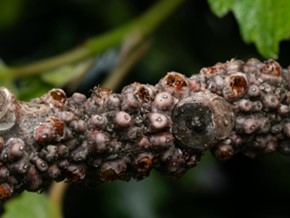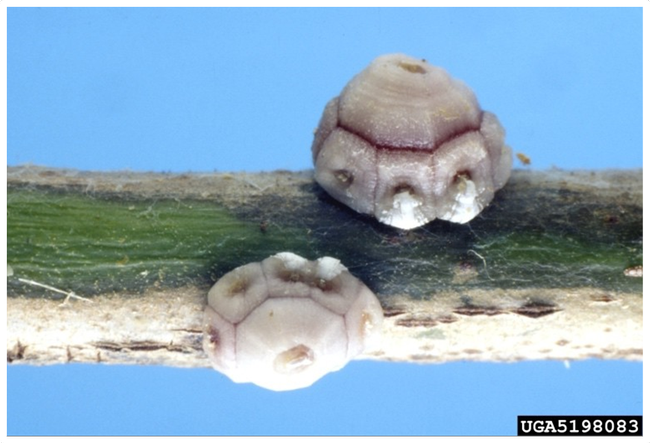- Author: Ben A Faber
Get an airblast sprayer in the right condition so it can do its job right.
Read a summary of calibrating an airblast sprayer
https://www.sacvalleyorchards.com/almonds/foliar-diseases/pre-season-airblast-sprayer-calibration/
Using a calibration guide
https://ccag-eh.ucanr.edu/files/241473.pdf
Read it as written by Lynn and Franz
https://ucanr.edu/sites/ucexpertstalk/files/328586.pdf
or watch it as played by Peter
https://www.youtube.com/watch?v=c48h75tb-CY
or take the course on calibration for CEU credits
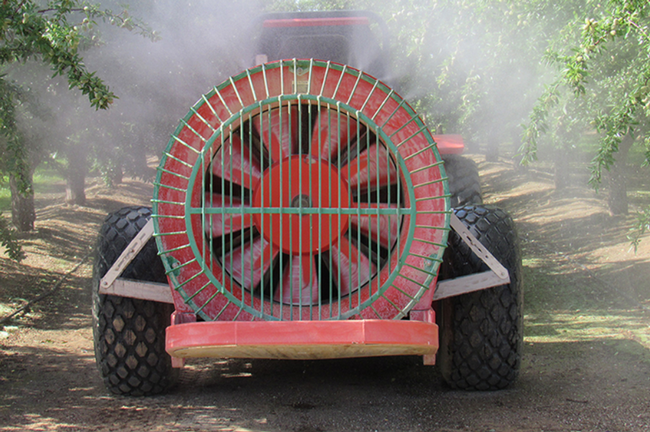
- Author: Ben A Faber
There has been a recent expansion of Avocado Lace Bug into parts of the Carpinteria area. It was more or less located in the San Diego coastal area. It spreads mainly with people.......
Read about it at the UC-IPM website and the observations of Mark Hoddle, IPM Specialist at UC Riverside.
https://ipm.ucanr.edu/agriculture/avocado/avocado-lace-bug/#gsc.tab=0
- ALB does better in the slightly cooler more humid orchards in Oceanside when compared to the hotter inland Bonsall orchards.
- In the lab, under a fluctuating 24 hr temperate cycle similar to an avocado orchard in Escondido, optimal temps for development are a daily average of around 31-32oC (88-90oF)
- ALB life stage densities tend to be greater on leaves over June-Oct
- % leaf infestation measures (i.e., the proportion of sampled leaves with ALB lifestages) tend to be peak over fall-winter (Sept-Feb), but ALB densities on leaves are not as high as what are seen over June-Oct, there are basically more leaves with ALB and those per leaf densities are lower that numbers counted over June-Oct.
- Its hard to predict what the next season's ALB will be as lots of ALB are shed when leaves drop, but like persea mite, some manage to get back onto the new leaves to start the next round of infestations. Adults don't seem to be very flighty, well, at least they don't seem to exhibit mass flight activity that would suggest searching for new hosts as leaves deteriorate.
Keep your eyes open for a future edition of the CA Avocado Commission's magazine - From The Grove - for a more thorough discussion of the pest.
https://www.californiaavocadogrowers.com/publications/from-the-grove
images:
Adult
Adults, young, and fecal pellets
Leaf damage
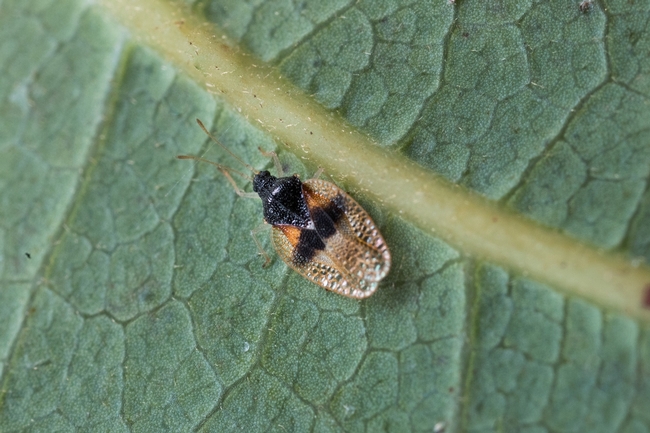

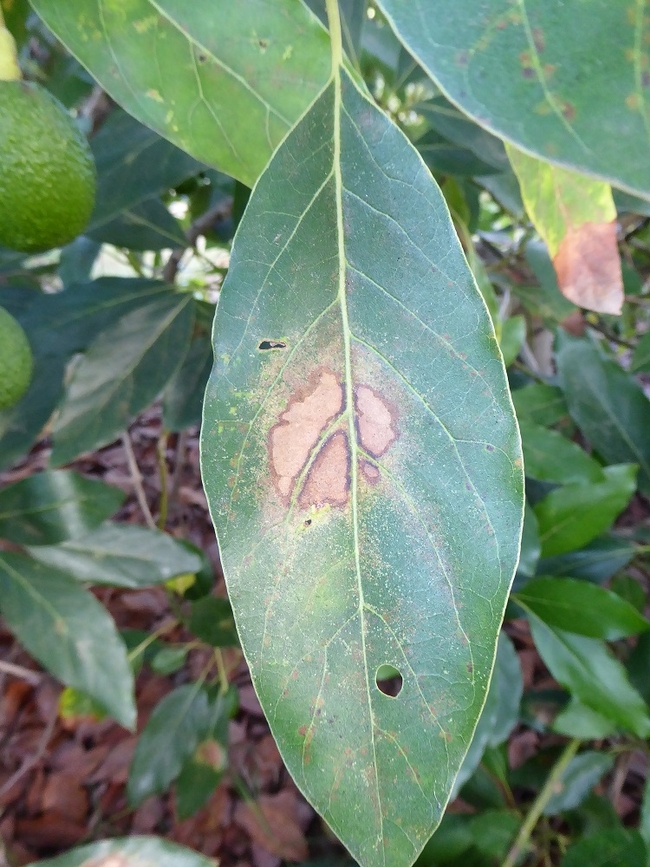
- Author: Ben A Faber
Avocado Irrigation Workshop
Avocado Irrigation Workshop
October 16 (Wednesday), 2024
2:00 – 5:00 P.M.
UC Cooperative Extension Ventura County (California Room)
669 County Square Dr, Ventura, CA 93003
Workshop registration link: Registration
|
2:00 - 5:00 p.m. |
|||||||||
|
|||||||||
|
Break: 10 mins. |
|||||||||
|
3:45 |
Using Soil Moisture Sensor to Optimize Irrigation – Andre Biscaro, UCCE Irrigation and Water Resources Advisor, Ventura County |
||||||||
|
4:15 |
Water Distribution Uniformity Management in Orchards – Jamie Whiteford, Ventura County Resource Conservation District |
||||||||
|
4:45 |
Mission Produce TM: Resources and Updates - Danny Klittich, Mission Produce |
||||||||
|
5:00 |
ADJOURN |
||||||||
For more information about the workshop, please contact
Ali Montazar, amontazar@ucanr.edu, or Ben Faber, bafaber@ucanr.edu.
CEU CREDITS: CCA (2.5 hrs.)
VCAILG (2.5 hrs.)
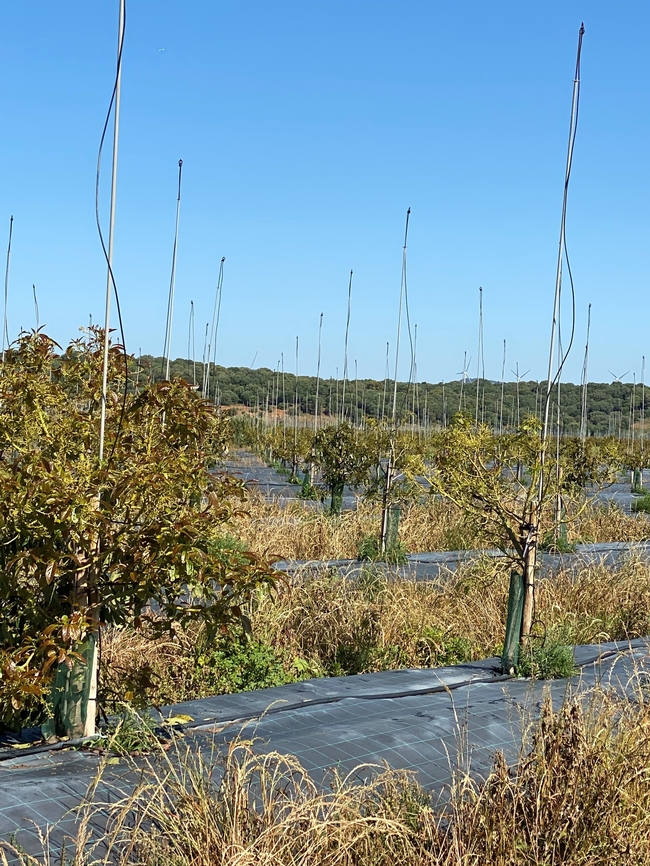
- Author: Ben A Faber
Informational Videos Covering Fertilizer Application through Irrigation Water
Now Available in English and Spanish
Nicole Nunes FREP Grant Program
Through a grant from the Fertilizer Research and Education Program (FREP), Cal Poly's Irrigation Training and Research Center (ITRC) has developed a series of informational videos covering chemicals, application hardware, techniques, and timing of fertilizer application through irrigation water.
The videos are based on information provided in the Fertigation book developed by ITRC and updated in 2019. The Fertigation book is also available in English and Spanish and can be downloaded for free from the ITRC website: https://www.itrc.org/books/index.html
The 22 informational videos are available on YouTube or through the ITRC website and cover the following topics:
- Overview
- Basic Fertilizer Chemistry and Vocabulary
- Nitrogen and the Environment
- Basic Soil Principles
- Crop Fertilizer Requirements
- Testing of Plants Soil and Water
- Fertilizer Labels Characteristics and Usage
- Nitrogen Conversions
- Volatilization of Ammonia from Irrigation Water
- Irrigation System Uniformity and Efficiency
- Safety
- Purging Media Tanks of Chemicals
- Calibration, Titration, and Travel Time
- Varying Venturi Injection Rates
- Chemigation for Soil Infiltration Problems
- SO2 Generators (Sulfur Burners)
- Chemigation for Drip System Maintenance
- Incompatibility of Different Fertilizers
- Proportional Injection
- Fertilizer and Chemical Injection Devices
- Calibration of Fertilizer and Chemical Injectors
More Fertigation Resources Coming Soon
ITRC is developing the informational video series into a Fertigation Certificate Program available to the irrigation and fertilizer industry. The videos will be coupled with information and suggested readings from the Fertigation book to create a comprehensive online course. Course participation will be verified with an exam on the presented materials and successful participants will receive a certificate of completion.
Stay tuned for more information regarding the availability of the certification program.
To learn more about this project and other current and completed FREP projects please visit: https://www.cdfa.ca.gov/is/ffldrs/frep/Research.html
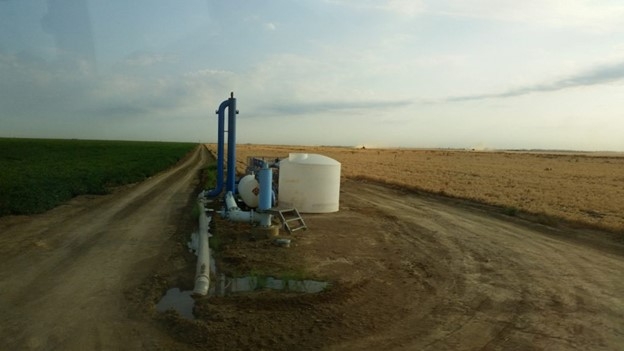
- Author: Bodil Cass
F\ig Wax Scale has recently been detected in the environment in the San Diego County. This insect is commonly intercepted at ports of entry, especially on shipments of palms, but has not previously established a reproductive population in California to our knowledge.
Fig wax scale is an A-rated, actionable invasive pest by CDFA, due to its high potential to damage fresh fruit production through lowering yield, increased production costs, disruption of export markets, and vectoring of plant viruses including grape vine leaf-roll virus. It is a polyphagous phloem feeder and a potentially devastating pest of many high-value crops including almond, grape, citrus, pistachio, avocado, cotton,fig,palms,pear,and ornamentals.In the USA it is currently only found in Florida, although it is distributed throughout much of the rest of the world and frequently affects citrus and fig production in Europe. The environmental conditions throughout much of California are considered favorable for this scale to establish if it is not eradicated and prevented from re-entering.
For more on this scale and other recent topics, check out the Topics in Subtropics Newsletter:
https://ucanr.edu/blogs/blogcore/postdetail.cfm?postnum=60446
